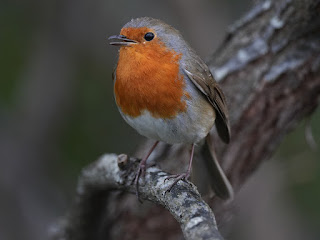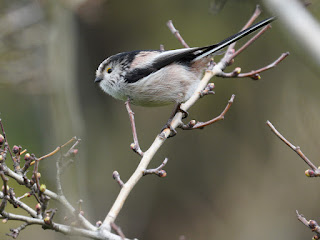It started to drizzle in mid-morning and turned to steady rain. welcomed by a Blackbird in the Rose Garden because rain brings up worms.
Robins feel the same way and this one was singing cheerfully.
But even on a dry day worms are plentiful on the Parade Ground. Virginia took this splendid picture of a Redwing hauling up a particularly resistant one yesterday.
A Chaffinch stared down from a twig near the bridge.
A Great Tit sheltered in a holly tree.
The Long-Tailed Tits continued work on their nest on the other side of the path.
A Pied Wagtail hunted along the edge of the Serpentine.
A Black-Headed Gull explored a puddle.
Gulls love buoys.
Another young Herring Gull photographed by Duncan Campbell, diving to find something to play with.
The Great Crested Grebes under the willow added twigs and weed to their nest -- or at least to the nest they stole from the Coots that built it. But even well built Coot nests subside slowly and have to be constantly built up.
A Canada Goose on the Diana fountain landing stage had been taken short and laid an egg before a nest could be made.
A bit of rain helps with preening, so three Tufted Ducks took the opportunity.
Work has begun on extending the reed beds on the Long Water.
Reeds are supposed to be planted on material dredged up from the bottom of the lake, to avoid putting down soil which would leach nutrients into the water and encourage the growth of algae. However, the bottom of the lake is covered by centuries' worth of soot from coal fires and modern hydrocarbon residues, and is not a good substrate for reeds. Also the bottom of the lake is a layer of dense puddled clay which must not be broken through, so not much can be dredged up. When the reed beds were first put in about fifteen years ago they ran out of material and had to add ordinary earth. This may have had a temporary ill effect on the water, but it also had a good consequence. The first reed beds to be made did poorly on the toxic muck from the lake bottom and a lot of the reeds died -- there are still big gaps. The reeds planted later on earth grew very well.
Finally, another good picture from Duncan Campbell: a Small Tortoiseshell butterfly.













I wonder how they find the worms. Do they hear them, or perhaps feel vibrations underneath? I am always amazed by how quickly and easily Blackbirds will detect and pull up a worm.
ReplyDeleteI am puzzled by that solitary egg.
I think they can hear and feel the vibration of worms, but eyesight is most important as the worms often stick their heads just out of the ground.
DeleteGeese, and sometimes swans, do lay these accidental eggs. I've often seen them, mostly under water at the edge of the lake.